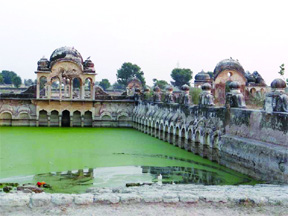

“The Agnipath scheme — envisaged as a short-term contractual recruitment model for the Army, Navy and Air Force — is billed as the next big thing in reforms but its announcement singed and burnt large parts of the country because the template strikes at the heart of the gravest problem before India: unemployment. Agnipath’s announcement coincided with the Centre’s declaration to create 10 lakh government jobs in 18 months and reflected an urgency not to allow the issue of unemployment to fester. After all, 2024 is two years away and in the interregnum, there are elections in Gujarat, Karnataka, Madhya Pradesh, Rajasthan and Chhattisgarh. Modi projected the decisions as a double bonanza for India’s young population, but they had a contrarian fallout.”
Demographic dividend, a phrase used by the PM to impress a global audience about India’s youthful population being an asset and development driver, threatened to become demographic debt when the protests against Agnipath turned violent. Expectedly, the Opposition and unseen ‘anti-national’ forces were blamed for the mayhem but no bulldozers were rolled out to crush the dissenters.
Prime Minister Narendra Modi had a point when he stated that “good work” was often tangled in partisan politics at a recent function in the national capital. He did not allude to the wave of protests swamping the country over the Agnipath scheme touted by the establishment as regenerating far-reaching “reforms” in the military sector but these were probably on his mind. India has a tradition of opposing reforms in any area. Modi’s predecessors, PV Narasimha Rao, Atal Bihari Vajpayee and Manmohan Singh would know that the R-word was a red rag to their political opponents and their own parties.
Till today, the Congress holds Rao culpable for ushering in economic liberalization — the seeds of which were ironically sown by Rajiv Gandhi when he was the PM — although the reforms lifted a sinking economy from its worst crisis. The Congress believes Rao’s reforms cost the party victory in the 1996 elections. Vajpayee created the Disinvestment Ministry to fast forward the sale of “ailing” public sector undertakings (PSUs). Indeed, he managed to divest the government’s stakes in majors such as Balco, Hindustan Zinc, Indian Petrochemicals and VSNL but was halted in his tracks by his coalition allies and the Sangh fraternity from privatizing profit-making companies, HPCL and BPCL. As the PM, Singh, who brought the economy up to code in the Rao regime, often spoke of reducing subsidies, bringing in FDI in insurance and implementing the Goods and Services Tax (GST) to streamline the taxation jumble but could not. He succeeded in pushing through the India-US Civil Nuclear Agreement but nearly at the cost of imperiling his government’s life and amid murmurs of dissent in the Congress.
For Modi, reforms make up a mixed bag. His government heralded the GST regime and compressed 29 Central labor laws into four codes which granted businesses more freedom to hire and shed workers and make strikes and lockouts more difficult. Conversely, the government’s reforms zeal was blunted when it was forced to shelve an amended land acquisition law under pressure from a “parivar” affiliate and repeal the three “reform-oriented” farm laws following large-scale and long-drawn protests and the electoral imperative. It was a slight which the government didn’t take lightly but could do nothing.
The Agnipath scheme — envisaged as a short-term contractual recruitment model for the Army, Navy and Air Force — is billed as the next big thing in reforms but its announcement singed and burnt large parts of the country because the template strikes at the heart of the gravest problem before India: unemployment. Agnipath’s announcement coincided with the Centre’s declaration to create 10 lakh government jobs in 18 months and reflected an urgency not to allow the issue of unemployment to fester. After all, 2024 is two years away and in the interregnum, there are elections in Gujarat, Karnataka, Madhya Pradesh, Rajasthan and Chhattisgarh. Modi projected the decisions as a double bonanza for India’s young population, but they had a contrarian fallout.
Demographic dividend – a phrase used by the PM to impress a global audience about India’s youthful population being an asset and a development driver – threatened to become demographic debt when the protests against Agnipath turned unexpectedly violent for the government, with Bihar, Uttar Pradesh, Haryana and Telangana taking the severest hits. The agitators stopped at nothing. Trains and buses were gutted. Expectedly, the Opposition — or what remains of it- and unseen “anti-national” forces were blamed for the mayhem but no bulldozers were rolled out to crush the dissenters.
Privately, even BJP sources conceded that Agnipath was not thought through thoroughly. Like with the GST that was subject to constant tweaks as BJP-aligned trade lobbies raised objections, the Centre responded to the protests by bringing in changes in the four-year tenurial scheme such as enhancing the upper age limit for recruitment from 21 to 23 years, and earmarking a 10 per cent quota for the out-of-work Agniveers in Central Government jobs, Coast Guard, defense civil jobs, Central paramilitary forces and Assam Rifles. A palliative to soothe frayed nerves?
Critics’ observations seemed prescient, particularly after Kailash Vijayvargiya, BJP national general secretary, was heard saying in a video clip that if he had to engage security in the party office, he would give preference to the Agniveers. Quite simply, the BJP is hard put to explain what the scheme is about to its own. On TV and other forums, the Centre drafted the services of serving and superannuated military officers to engage with a niche audience but the nub of the issue is, how will it take the message to the countryside, if it has one? Its own ally, the Janata Dal (United), asked the Centre to forthwith scrap the scheme although inexplicably, Bihar Chief Minister Nitish Kumar did nothing for three days to contain the rampaging protesters in his state.
The BJP could draw political mileage from the showdowns in the past because those against the CAA and its spokesperson’s remarks disparaging the Prophet had a communally polarizing overtone which emphasized its core agenda. The Agnipath maelstrom has pushed the party and the Centre into another sphere.
(The author is a Senior Journalist)





Be the first to comment